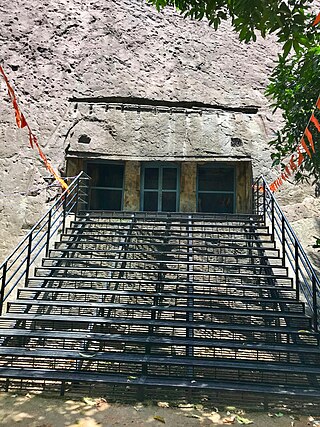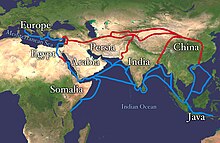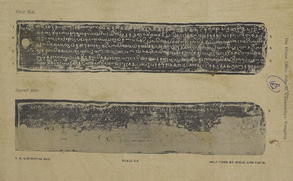Venad was a medieval kingdom between the Western Ghat mountains of India with its capital at city of Quilon. It was one of the major principalities of Kerala, along with kingdoms of Kolathunadu, Zamorin, and Kochi in medieval and early modern period.

The Chera dynasty, was a Sangam age Tamil dynasty which unified various regions of the western coast and western ghats in southern India to form the early Chera empire. The dynasty, known as one of the Three Crowned Kings of Tamilakam alongside the Chola and Pandya, has been documented as early as the 4th to 3rd centuries BCE. Their governance extended over diverse territories until the 12th century CE.

Mushika dynasty, also spelled Mushaka, was a minor dynastic power that held sway over the region in and around Mount Ezhi (Ezhimala) in present-day North Malabar, Kerala, India. The country of the Mushikas, ruled by an ancient lineage of the Hehaya clan of the same name, appears in early historic (pre-Pallava) south India The dynasty claimed descent from the legendary Heheyas. Early Tamil poems contain several references to the exploits of Nannan of Ezhimalai. Nannan was known as a great enemy of the pre-Pallava Chera chieftains. The clan also had matrimonial alliances with the Chera, Pandya and Chola chieftains. The Kolathunadu (Kannur) Kingdom, which was the descendant of Mushika dynasty, at the peak of its power, reportedly extended from Netravati River (Mangalore) in the north to Korapuzha (Kozhikode) in the south with Arabian Sea on the west and Kodagu hills on the eastern boundary, also including the isolated islands of Lakshadweep in the Arabian Sea.

Thirunandikkara Cave Temple, also referred to as Thirunanthikarai rock-cut Shiva temple, is a 9th-century rock-cut Hindu cave temple in Kanyakumari district, Tamil Nadu, India. It is dedicated to Shiva, with murals and inscriptions. It is attributed to the Ay king Vikramaditya Varaguna by Archaeological Survey of India, but to Pandya rulers (Nedunjadaiyan) a few decades earlier by Ajit Kumar, an archaeologist. It is part of a larger active temple complex named the Thirunanthikarai Shri Nandeeswara temple, Thirunanthikarai and is carved out of the side of a rocky hillock to the north of the temple complex. According to Rao, one of the inscriptions suggests that this may be a late 8th-century cave temple or early 9th.

Rama Kulasekhara was the last ruler of the Chera Perumal dynasty of medieval Kerala. He was a contemporary to Chola kings Kulottunga I (1070–1120) and Vikrama Chola. Rama Kulaskehara is best known for briefly recovering Kollam-Trivandrum-Nagercoil region from the powerful Chola empire around 1100/02 AD.

Kulasekhara, one of the twelve Vaishnavite alvars, was a bhakti theologian and devotional poet from medieval south India.He is considered as the incarnation of kaustubh mani which hangs around the neck of Lord Vishnu. The Trikkulasekharapuram Temple in Kodungallur is considered as the Alvar's birthplace, located in modern-day Kerala region. He was the author of Perumal Tirumoli in Tamil and "Mukundamala" in Sanskrit. The Perumal Tirumoli, whose second decade is known as "Tetrarum Tiral", is compiled as a part of Nalayira Divya Prabandham. The Trikkulasekharapuram Temple in Kodungallur is considered as the Alvar's birthplace.

The battle of Kandalur salai, also spelled Kanthaloor salai, was a naval engagement of the Cholas under Rajaraja I against the "salai" at Kandalur in Trivandrum Kerala. The exact location of Kandalur—somewhere south Kerala—is a subject of scholarly debate. The above event is sometimes assumed to be identical with the "conquest of Vizhinjam by a general of Rajaraja [I]", before the burning of Lanka, given in the Tiruvalangadu Grant/Plates.
The history of Thiruvananthapuram dates back to the 18th century AD. In 1795, the city became the capital of the princely state of Travancore. Several historic landmarks of the city, including the Kowdiar Palace, University of Kerala, and Napier Museum were built during that period. After independence, Thiruvananthapuram was made the capital of the state of Kerala.

Chadayamangalam is a village located in Kollam district of Kerala state, India. It is located along the Ithikkara river and the MC road that passes across the major urban locations of Kerala. It acts as centre for Chadayamangalam block panchayat, gram panchayat and assembly constituency. It hosts numerous government institutions including hospitals, schools and police station. Chadayamangalam is well noticed for newly constructed Jatayu Earth’s Center, which is a tourism centre in the town with the world’s largest bird sculpture. The place is also referred to as Jatayumangalam.
The Rulers of the Chera dynasty or Rulers of the Chera Perumals were the kings of Chera dynasty of Kerala. The first Chera Perumal was "brought" from a country east of the Ghats to Kerala by Nambudiri Brahmins.

Vikramaditya —better known as Vikramaditya "Varaguna"—was a monarch of the Ay dynasty of Kerala, south India. His surname indicates that he was a vassal or feudatory of the Pandya ruler Varaguna II. He was the immediate successor of Karunantatakkan "Srivallabha", a vassal of Pandya king Srimara Srivallabha.

Thiruvalla copper plates, also known as the Huzur Treasury Plates, are a collection of medieval temple committee resolutions found at the Sreevallabha Temple, Thiruvalla, Kerala. The collection of plates, engraved in old Malayalam language in Vattezhuthu with some Grantha characters, can be dated to 10th and 11th centuries AD.

Vazhappally copper plate is a copper plate inscription in Malayalam language from Vazhappally, in the state of Kerala, south India. Recent scholarship puts the date of the plate in c. 882/83 AD.

Vellan Kumaran, diksa name Chaturanana Pandita, was a Kerala commander in the Chola army and a close confidant of prince Rajaditya. He was probably one of the few Chola commanders to have survived the battle of Takkolam in 948/49 AD. Kumaran is best known for engraving his own tragic autobiography in an inscription at Tiruvotriyur, Madras.

Vira Kerala, also spelled Veera Kerala or Keralan, was a name given to male members of several medieval ruling families of Tamil Nadu and Kerala.

Chera Perumals of Moktai also known as the Cheraman Perumal dynasty, or Perumal dynasty of Kerala,, were a ruling dynasty in present-day Kerala, South India. Mahodayapuram, or Makotai, the seat of the Cheraman Perumals, is identified with present-day Kodungallur in central Kerala. Initially, their influence appeared limited to the area between present-day Quilon and Quilandy, but later extended to up to Chandragiri river in north Kerala and to Nagercoil in the south.

Kongu Chera dynasty, also known as Cheras of Kongu or Cheras of Karur, or simply as the Chera dynasty, were a medieval royal lineage in south India, initially ruling over western Tamil Nadu and central Kerala. The headquarters of the Kongu Cheras was located at Karur in central Tamil Nadu. The Chera rulers of Kongu were subordinate to or conquered by Pallava, Pandya and Chola rulers are also said to have overrun the Kongu Chera country.
Vijayaraga was the Chera Perumal ruler of Kerala from c. 883/84—c. 895 AD. The reign of Vijayaraga probably witnessed the expansion of Chera Perumal influence into the neighboring Ay and Mushika countries.

The Mampalli copper plate, also romanised as Mamballi, records a donation from the chiefly family of Venad, present-day Kerala, to the Chengannur Temple. The inscription is the earliest epigraphical record to mention the Kollam Era.

Tamil dynasties are the kingdoms who ruled over present day Tamil Nadu, Sri Lanka, Andhra Pradesh, Karnataka, Kerala and Odisha. These include the Pallavas, the Pandyas, the Cholas and the Cheras.























